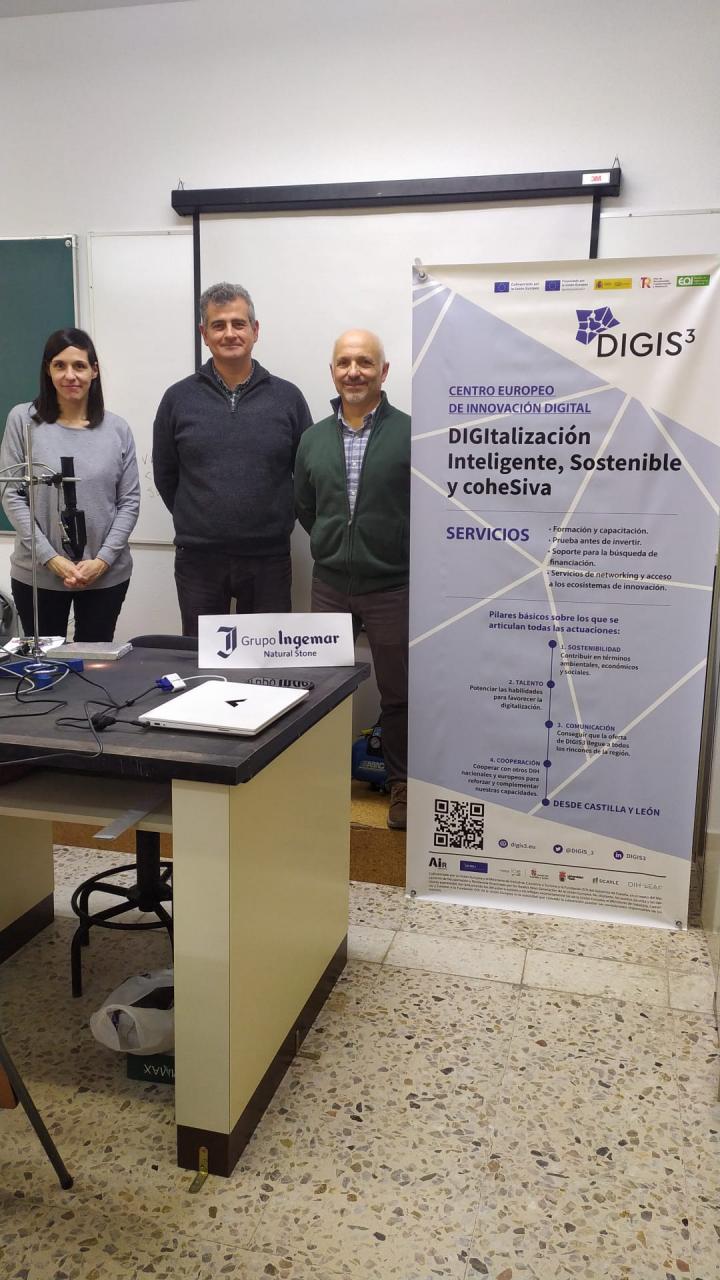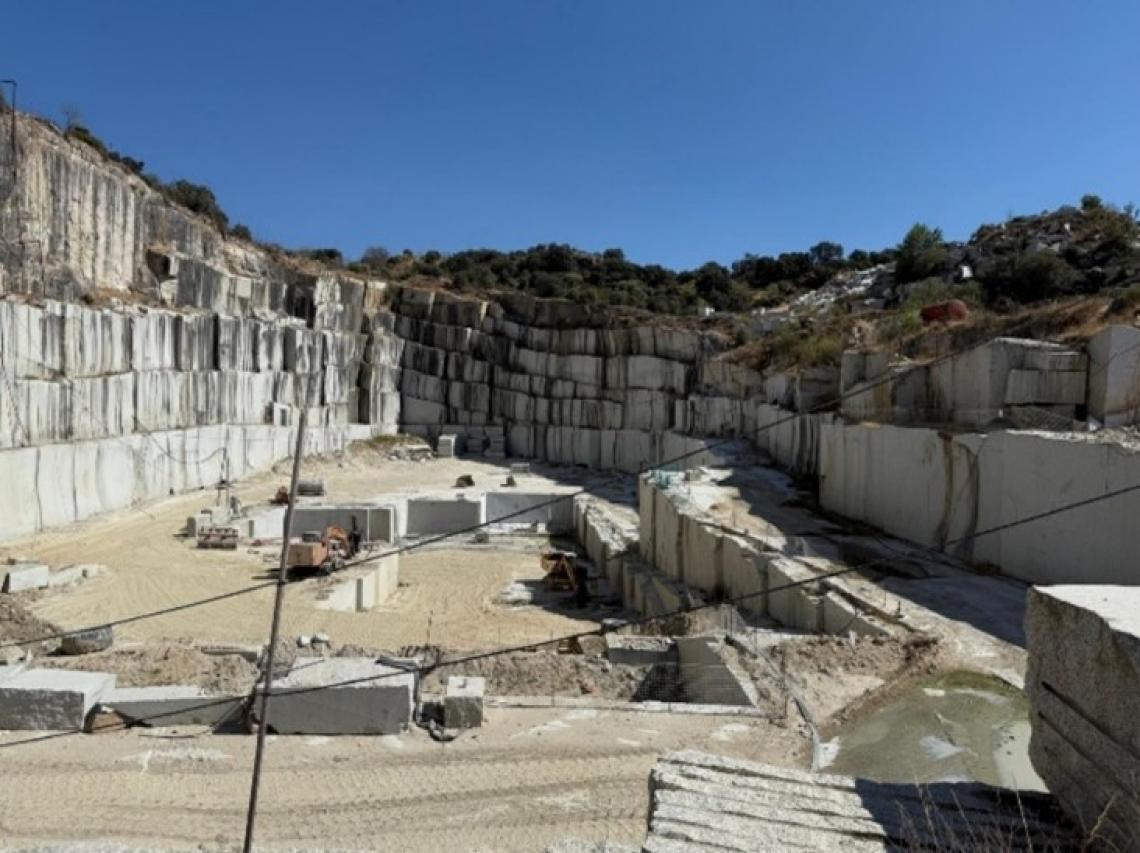Researchers and geologists from the Q-GEO Research Group (Environmental Geology, Quaternary and Geodiversity) at the University of León, within the framework of the DIGIS3 project, have provided the Ingemar Group —a company that owns quarries and specialises in the processing and marketing of ornamental granite— with the results of a report prepared after carrying out over 100 measurements on 18 rock samples from eight quarries located in different parts of Spain and Portugal.
The measurements were taken using laboratory reflectance spectroscopy to analyse the quality and possible alteration processes of granitic rocks intended for ornamental use. This cutting-edge technique allows for a rapid assessment of rock quality without having to wait several days for conventional laboratory results.

As part of the DIGIS3 consortium, the Q-GEO group of the University of León is bringing technologies based on remote sensing and VNIR-SWIR laboratory reflectance spectroscopy closer to companies and technology centres involved in the exploitation and/or extraction of rocks. The aim is to provide useful information to support their digital transformation processes. These technological advances include, among others, the development of proximity remote-sensing maps showing the spatial distribution of mineral concentrations in all types of rocks, thereby enabling the swift detection of possible pathologies or impurities and helping to determine the rock’s potential applications.
In this particular case, the service was provided to the Ingemar Group, which is engaged in the research, extraction, processing and marketing of ornamental rock from its own quarries at both national and international levels.
In the experiment, laboratory reflectance spectroscopy (the basis for hyperspectral proximity remote sensing) was used to simulate, in real time, the compositional determination (its variety and alterations) of different ornamental granitic rocks. Several cut slabs corresponding to six types of granite from various regions of the Iberian Peninsula were analysed.
The potential application of this technology, both in the cutting plant and at the rock extraction front, could significantly improve the classification and selection of surface treatment for usable quarry material. This would help prevent the transport of large blocks to cutting plants that would later be discarded as waste, thereby enhancing quarry efficiency and improving the compositional characterisation of the material. Ultimately, this contributes to more efficient and sustainable extraction and processing practices.

CUTTING-EDGE TECHNOLOGY
Laboratory reflectance spectroscopy involves measuring the spectral response of a rock’s surface when exposed to electromagnetic energy within the regions of the electromagnetic spectrum corresponding to VNIR (visible and near-infrared) and SWIR (short-wave infrared). These spectral curves allow for the direct identification of minerals such as iron oxides (hematite, goethite, jarosite, etc.) in the VNIR region, and clays, carbonates, micas, sulphates and other minerals in the SWIR region.